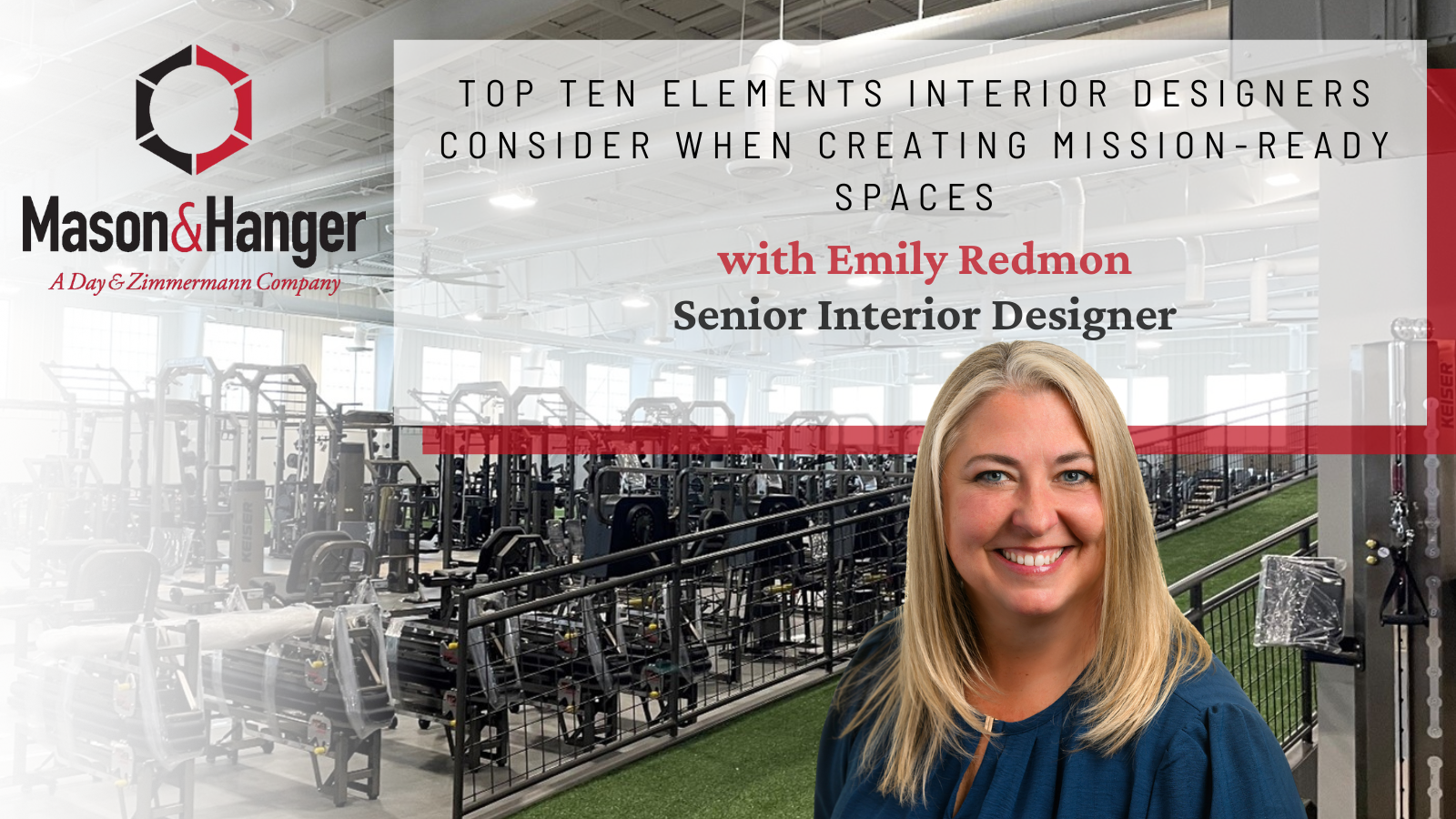Interior design might not always grab the spotlight, although, it plays a quiet yet crucial role in how a building performs. Whether Interior Designers are planning a headquarters building, specialized human performance training center, or a one-of-a kind survival, evasion, resistance, and escape training village, every decision must be sustainable, follow strict standards from the customer, and have cohesive elements that work together.
Interior Designers play a key role in the design process from the start. Working alongside architects and engineers, Interior Designers create environments that aren’t just nice to look at — they are built to support real people doing mission critical work. Design decisions aren’t based on passing trends or personal styles. They are based on functionality, code-compliance, safety, and the unique needs of each project.
Here are 10 key elements Interior Designers focus on every day:
1. Understanding Client Needs & Space RequirementsA big part of an Interior Designer’s job is listening to their clients. They often come to us with complex requirements, and it’s the Designer’s job to turn those into clear, coordinated design solutions that make sense on paper and in practice.
2. Space Planning & FunctionalityGood space planning goes beyond furniture layouts. It’s about how people move, work, and interact in a space. In many projects, space is often limited, so every square foot has a purpose.
3. Material & Design ChoicesInterior Designers select and specify finishes, furniture, and signage; develop construction documents, structural interior design (SIDs) and furniture, fixtures, and equipment (FF&Es) packages; review contractor submittals and respond to requests for information (RFIs) and resolve field issues during construction.
4. Environmental AwarenessInterior Designers support sustainability goals by selecting low emitting, recycled, and regionally sourced products where possible. Signage design works in tandem with mechanical and civil engineering elements to enhance air quality by reducing or eliminating contaminants from entering facilities.
5. Collaboration With Other DepartmentsInterior Designers coordinate with Architects to create engaging spaces, Electrical Engineers to ensure connectivity and power/data needs, and with Sustainability Engineers to help achieve LEED certification from the U.S. Green Building Council (USGBC).
6. Attention to DetailInterior Design is full of fine details. From technical drawings to finish schedules, furniture quantification schedules and procurement reports, precision is key to keeping projects on time and on budget.
7. User-Centric ApproachAt the heart of every design is the End-User. Interior Designers consider how people will interact with a space — promoting and protecting the health, safety, and welfare of a building’s occupants.
8. Building Systems KnowledgeUnderstanding HVAC layouts, lighting plans, and power/data systems allows Interior Designers to make informed decisions that integrate seamlessly with the rest of the building infrastructure.
9. Adaptability & Continuous LearningDesign is always evolving. Interior Designers stay current through regular meetings with manufacturer’s representatives and events like NeoCon in Chicago — the world’s leading platform for commercial interior design products. These efforts keep our team at the forefront of emerging materials, technologies, and best practices.
10. NDIDQ CertificationThe National Council for Interior Design Qualification (NCIDQ) certification is considered the gold standard for Interior Designers, signifying a high level of competence and commitment to the profession. Passing the rigorous multi-part exams totaling 12-16 hours, demonstrates a Designer's knowledge of building codes, regulations, and design principles, and is the prerequisite for any for state-level licensure. While only a handful of states require it for commercial design, our government contracts at Mason & Hanger require it.
Interior Design is more than aesthetics. Our role is to create efficient, functional spaces that hold up over time. At Mason & Hanger, we take pride in the technical side of design and the precision it demands, and the goal remains the same: deliver spaces that quietly support the people who serve.


